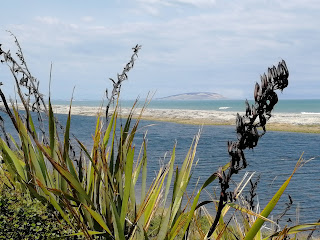We have been home for a week, and as usual we have been busy, with a little recovery time as well.
The first thing we noticed on our arrival back was the extent of the dryness here. When driving to Aldinga we noticed that the paddocks were beginning to lose the grass, and dry dusty earth was evident everywhere. The hotter weather has also been noticeable.
We left Christchurch early last Saturday morning, feeling sad to leave the family behind but the tragedy in Christchurch was mostly in our thoughts. How could this happen in such a lovely quiet city, which has had its fair share of disasters, having experienced two major earthquakes plus another one further north.
We were totally unaware of the shootings until we arrived in Christchurch the previous afternoon, although we did wonder why there was little traffic about on the roads. It was not until we dropped the car off that we were told that Christchurch was in lock down, with possibly two or more deaths at one of the mosques. And the person, or group involved, where at that stage still at large. Little did we know then that it ended up with 50 dead, in two mosques. Andreena, in the meantime, was in the motel room receiving calls from her mother and brothers, who were getting quite concerned about us.
Our heart goes out to the families of the people concerned, who were innocently praying in their buildings of worship, and also to the people of Christchurch, who are still reeling in shock.
But back to our last few days in New Zealand, which were spent with Margaret and Gordon in Nelson. Gordon prepared two delicious dinners for us, and made lots of biscuits and cakes, plus preserves so we were certainly a very happy little group.
While we were there we caught up on our washing, did some shopping, and spent time catching up with Neville and Maia, Danielle, Casey and her two little children. Altogether a very pleasant and relaxing few days.
Nelson had been in the midst of a drought before we arrived, and the view of the surrounding hills showed brown grass and burnt looking trees. I think that I have only ever seen a green Nelson before this. While we were there it rained nearly every day, and by the time we left there was green grass showing through the dry grass.
We made a visit to Mapua, in order to have lunch at the fish cafe there. Such a pleasant place, even with the increasing number of tourists who now visit the area. There must be no complaints as tourists bring money.

I forgot to put a photo on of the car that we hired, a,Toyota Camry, which was very roomy and the four of us travelled in comfort during the trip. It was a pleasure to drive as well.
After saying a sad goodbye to Margaret and Gordon, the three of us continued on our way, minus Margaret of course. We felt a bit lost without our fourth traveller, and it was quite strange for a while. We assure you Margaret, it was not that you were the most talkative, just that it felt strange being short of one passenger.In New Zealand there are many one way bridges, with signs to let drivers know if they have right of way or not. Interestingly there is no reduction in speed signs before each bridge, and I often wonder whether people, especially tourists, slow down before approaching the bridges. I also wonder how many accidents occur on the bridges, due to speed. But I think, generally, the one way bridges work very well.
After driving over the Whangamoa Saddle, with its steep and winding roads, and through the peaceful vineyards of Malborough, we arrived at the earthquake damaged road leading into, and out of Kaikoura. This road, the state highway between Picton and Christchurch, was destroyed during the earthquake in November, 2016. The railway was also destroyed. Amazingly the NZ ability to rebuild again, despite it seeming an impossible task at first, has meant the highway and railway opened within two years.
Large numbers of seals have returned to the area.
The new shoreline looks quite different, with the disappearance of some land, and a new line of rocks where the sea bed was lifted up.
The tunnels have been strengthened and in some cases rebuilt.
Where huge landslides and rockfalls occurred, they have been cleared away and retaining walls have been built to prevent further landslides. A major engineering project.
After spending the evening confined to our motel room, we awoke extremely early as we were booked on the 6.00 flight. There were very long queues going through security and immigration which was very reassuring. For once I did not complain. We flew first to Brisbane, where we waited for a couple of hours before travelling onto Adelaide. Certainly a roundabout way of returning to Adelaide, but it meant that the connections were better.
And now we are back to a normal routine.
A morning walk with Piper, on a nearly deserted beach. Summer is over.
It rained this afternoon, and fingers crossed we get more of the wet stuff. Looking forward to a bit more green.


















































